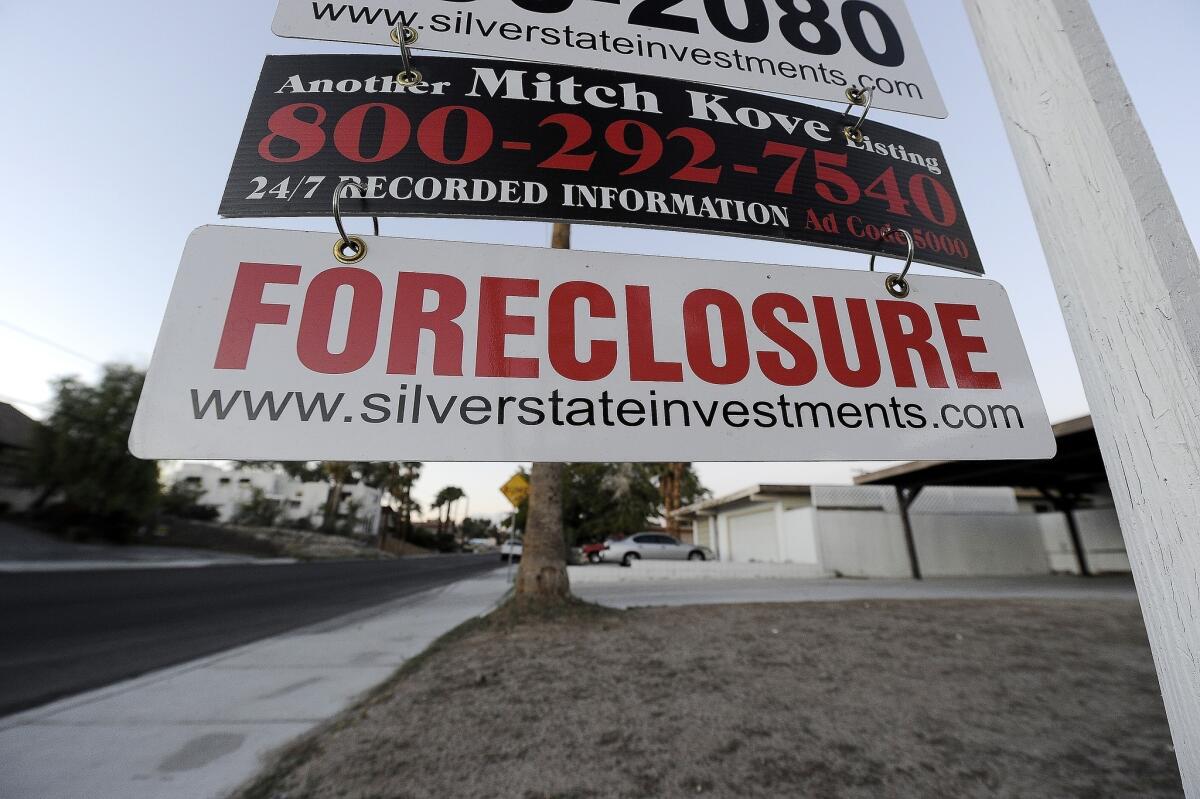FHA to get $1.7 billion in its first taxpayer-funded bailout

WASHINGTON — The Federal Housing Administration dramatically expanded its role after the subprime market collapsed, but at the expense of its own finances. Now, the government agency will get a first-ever bailout of $1.7 billion.
In a letter Friday to Congress, the agency’s head said it needed money to stabilize its long-term finances and cover potential losses on the huge volume of low-down-payment mortgages it insured from 2007 to 2009.
It’s the first time the 79-year-old FHA — created during the Great Depression to keep home lending flowing — will require taxpayer funding.
And it will get the money automatically. The FHA is financed by mortgage insurance premiums charged to homeowners and has been self-sustaining through its history. But it has the authority to draw funds from the Treasury without asking Congress.
FHA Commissioner Carol Galante informed lawmakers the agency would need the money Monday, the last day of the fiscal year, to ensure it has sufficient reserves to cover anticipated losses on the loans it backs. A bailout has been expected since April, when the Obama administration’s proposed 2014 budget projected the FHA would need $943 million by Sept. 30.
But the agency asked for nearly twice that much because of a recent decline in business, caused by rising mortgage interest rates, Galante said.
Others believe the FHA will ultimately need far more. Government accounting rules mask even greater financial problems at the FHA, which would be exacerbated by a stalling housing recovery, said Edward J. Pinto, a former Fannie Mae official who is a resident fellow at the American Enterprise Institute think tank.
“This number that they’re asking for is a very small number relative to the FHA’s real financial condition,” said Pinto, who estimated that under standard accounting practices the agency would need about $25 billion. “The FHA is woefully insolvent.”
For now, the requested bailout is far below the $187 billion in taxpayer money pumped into housing finance giants Fannie Mae and Freddie Mac since the government seized them in 2008 to prevent their collapse. Unlike the FHA, Fannie and Freddie were private companies before the housing crash. But they enjoyed implicit government backing because they were chartered by Congress.
The financial condition of Fannie and Freddie has improved tremendously as the housing market has recovered. The companies recently posted record profits, and by Monday will have paid a total of about $146 billion in dividends to the federal government on their bailouts.
The FHA’s problems were delayed because it did not start ratcheting up its activity until the housing bubble burst in 2007. The agency’s deteriorating finances have fueled overhaul bills in Congress. The bailout will boost those efforts.
“How many more taxpayer bailouts will it take before the administration admits that the FHA’s current business model is no longer solvent?” said Rep. Randy Neugebauer (R-Texas). “This news is a clear sign that we must act quickly to reform the FHA, or taxpayers will be paying the price again and again.”
Many Republicans have criticized the FHA’s expanded role in the housing market, warning that it put taxpayers on the hook. House Republicans are pushing legislation that would scale back the FHA’s role.
But Rep. Maxine Waters (D-Los Angeles) said the FHA guarantees played a crucial role in providing liquidity to the mortgage market during the Great Recession and financial crisis when “the private sector virtually left the market.”
“Above all, we must strive to have a healthy, viable FHA that can continue to facilitate homeownership for first-time and low-income home buyers, while standing ready in the unfortunate event of another housing downturn,” she said.
The FHA’s share of new loans with mortgage insurance jumped from 16.4% in 2005 to 70.7% in 2009, according to Inside Mortgage Finance. It dropped to about 44.3% last year.
The agency has been working to improve its finances by tightening underwriting standards, even as it continues to try to assist the housing market by insuring mortgages with down payments as low as 3.5%. The FHA also recently eased restrictions on borrowers with past foreclosures, making it easier for them to get new home loans.
FHA officials said its financial problems stem from losses on loans it insured from 2007-09 and from its reverse mortgage program. Galante stressed that the FHA does not need the taxpayer money to pay claims at this point. It has more than $30 billion in reserves.
But under law, it is required to have enough reserves to pay off all claims over the next 30 years. She said the agency’s finances might improve when it updates its assumptions about loan losses over the next few months.







